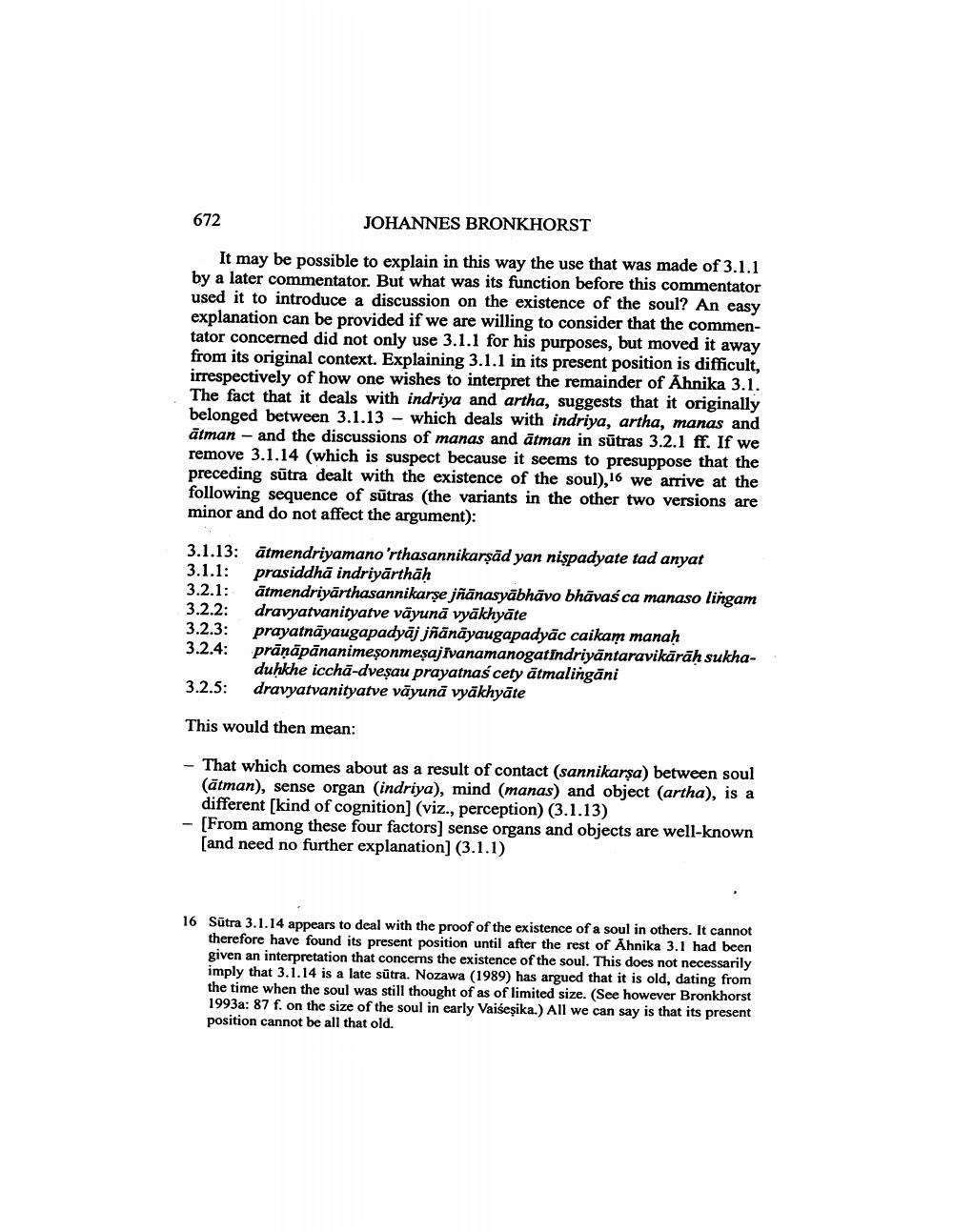________________
672
JOHANNES BRONKHORST
It may be possible to explain in this way the use that was made of 3.1.1 by a later commentator. But what was its function before this commentator used it to introduce a discussion on the existence of the soul? An easy explanation can be provided if we are willing to consider that the commentator concerned did not only use 3.1.1 for his purposes, but moved it away from its original context. Explaining 3.1.1 in its present position is difficult, irrespectively of how one wishes to interpret the remainder of Ahnika 3.1. The fact that it deals with indriya and artha, suggests that it originally belonged between 3.1.13 - which deals with indriya, artha, manas and ātman - and the discussions of manas and ātman in sūtras 3.2.1 ff. If we remove 3.1.14 (which is suspect because it seems to presuppose that the preceding sūtra dealt with the existence of the soul), 16 we arrive at the following sequence of sūtras (the variants in the other two versions are minor and do not affect the argument):
3.1.13: ātmendriyamano'rthasannikarşād yan nispadyate tad anyat 3.1.1: prasiddhā indriyārthāh 3.2.1: ātmendriyārthasannikarse jñānasyābhāvo bhāvas ca manaso lingam 3.2.2: dravyatvanityatve vāyună vyākhyāte 3.2.3:
prayatnāyaugapadyāj jñānāyaugapadyāc caikam manah 3.2.4: prāṇāpānanimeşonmeşajivanamanogatindriyāntaravikārāh sukha-1
duhkhe iccha-dveşau prayatnascety ātmalingāni 3.2.5: dravyatvanityatve vāyună vyākhyāte
This would then mean:
- That which comes about as a result of contact (sannikarşa) between soul
(ātman), sense organ (indriya), mind (manas) and object (artha), is a different [kind of cognition) (viz., perception) (3.1.13) [From among these four factors) sense organs and objects are well-known [and need no further explanation) (3.1.1)
16 Sūtra 3.1.14 appears to deal with the proof of the existence of a soul in others. It cannot
therefore have found its present position until after the rest of Ahnika 3.1 had been given an interpretation that concerns the existence of the soul. This does not necessarily imply that 3.1.14 is a late sutra. Nozawa (1989) has argued that it is old, dating from the time when the soul was still thought of as of limited size. (See however Bronkhorst 1993a: 87 f. on the size of the soul in early Vaišeşika.) All we can say is that its present position cannot be all that old.




